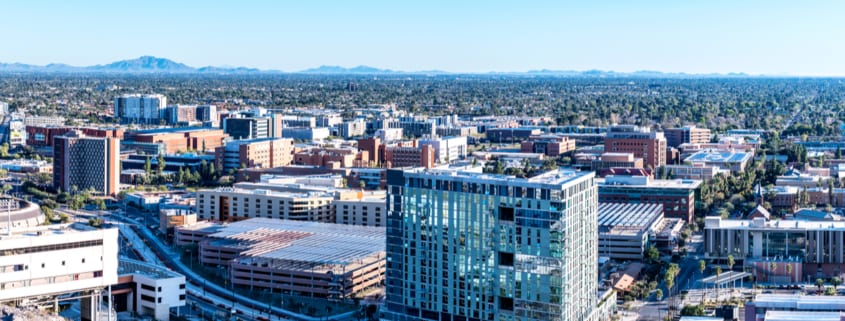Student Housing: Demand, Supply and Changing Expectations
The days of dilapidated and poorly maintained college housing seem to be behind us. The college environments from decades ago (e.g. Animal House) are not what current students are looking for when they consider off-campus housing options. Today’s student is looking for amenities such as private bedrooms and bathrooms, common areas like pools and lounges for socializing, 24-hour fitness centers, and collaborative working spaces. The changing expectations of the student along with increasing college enrollment could lead to a massive windfall of profits for the opportunistic commercial real estate business. Student housing may just be a minor subset of the multifamily property type, but it is poised for massive growth in the years to come.
Demand
In the fall of 2018, it is anticipated that there will be nearly 21 million people enrolled in a public or private college/university in the United States. According to the New York Times, 87% of these students will be choosing to live in some variation of off-campus housing (single family home rentals, duplexes, townhomes, apartment complexes, or at home with their parents).
One of the more intriguing aspects of student housing is the predictability. The school year is finite and most students depart once it ends, which means turnover is foreseeable. Also, many schools receive what is called a “master lease” to off-campus student housing projects. This is an exclusive agreement with the higher education institution and a property owner. These are normally struck prior to construction, giving the developer more insight into existing inventory (past, present, and estimated future enrollment), the surrounding market, and the institution’s own credit and balance sheet.
Another attractive aspect of this property subtype is the readily available data from online sources like Axiometrics. These data sources are allowing commercial real estate firms to move past Tier 1 college markets for smaller niche secondary markets where the need for off-campus housing is the greatest.
Supply – Current and Future
There is currently a constraint on available high-end off-campus housing that is purpose-built for the college student. And there are no signs the student housing market will slow anytime soon. According to Greg Faulkner, President of Humphreys & Partners Architects, colleges have little choice but to up their student housing game if they want to compete for the nearly 70% of graduating high school students who enroll in college. Humphreys & Partners Architects clientele includes 18 of the top 25 student housing owners.
Bill Bayless, the chief executive and a founder of American Campus Communities, recently used a baseball analogy to describe the sector’s growth trajectory over the next few years. “I’d say we’re in the bottom of the third inning or the top of the fourth.”
Current players in the student-housing sector are private equity firms, private developers and public REITs. The relative newness of this asset class compared to other property types, pent-up demand, and an influx of available capital has unleashed a building spree with no end in sight. Also, with many predicting a downturn in the market sometime in the near future, it is worth noting that last time there was a recession many people returned to school. This further added to the aforementioned pent-up demand.
Student Housing vs. Conventional Multifamily
The most attractive aspect of this property subtype are the returns compared to conventional apartments. In comparison, student housing has higher occupancy rates (96.5% for student housing vs 95.6% for apartments overall), higher cap rates, and better resiliency during economic downturns. Reasons like these are why more and more investor capital is finding its way into off-campus student housing.
Based on increasing demand, low supply, and favorable potential for returns compared to other property types, investors and developers alike are starting to turn their attention (and dollars) towards student housing. Interest is rising and will only continue to escalate as other asset classes begin to plateau.
Consider reading The Instagram Effect: Commercial Real Estate in the Age of the Selfie to learn more about the renting habits of Gen Z tenants.











